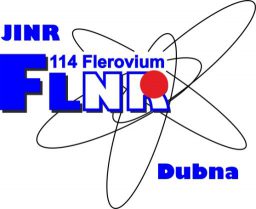High precision mass measurement of heavy and super heavy elements/Status of ACCULINNA-2 fragment separator and preparation of experiments with radioactive beams
08.06.2023 – FLNR Scientific Seminar, 15-30, FlerovLab Conference Hall
1. Krupa L., FLNR
(in connection with the election for the position of s.r.s.)
High precision mass measurement of heavy and super heavy elements
Mass is a fundamental property of an atom comprising all information on its constituents and their interactions. Thus, it carries information on the internal structure of the nucleus, reveal the quantum mechanical shell structure within complex nuclei and determine the energy available for nuclear transformations in radioactive decay processes. Mass measurements allow us to benchmark nuclear models and thus contribute to investigations of the nature of the strong interaction itself. The strong interaction governs not only the nuclear shell structure but also phenomena ranging from the element synthesis in the universe to the size of a neutron star. Today, direct mass measurements of radionuclides are experimentally performed using mainly two approaches: time-of-flight mass spectrometry (ToF-MS) and Penning-trap mass spectrometry (PTMS). These techniques are often referred to as direct as they do not require any knowledge on the nuclear level scheme or information from models to yield ground state masses.
With the aim of high-precision mass measurement of heavy and superheavy elements, a new experimental setup is being built in FLNR, Dubna. The setup will consist of the following parts, located on the ion beam line one after the other: target unit; gas-filled separator of complete fusion reaction products; cryogenic gas ion trap; a radio-frequency system for transporting and cooling a low-energy beam; a multi-reflection TOF mass spectrometer and Penning trap. The current status and perspectives of the project will be presented.
2. Gorshkov A.V. FLNR
(in connection with the election for the position of r.s.)
Status of ACCULINNA-2 fragment separator and preparation of experiments with radioactive beams
ACCULINNA-2 fragment separator at FLNR is intended for experiments with secondary beams of radioactive ions (RI) (Е ~ 15 – 50 MeV/nucleon) in the vicinity of nucleon stability line. The ability of this setup to provide high level of transmission and purification was confirmed experimentally for a number of RI beams in 2018-2020. 14B, 10,12Be, 9,11Li, 6,8He secondary beams intensities were on average 15-20 times higher than ACCULINNA fragment separator data. This agrees with the setup technical characteristics.
Status of ACCULINNA-2 fragment separator subsystems is presented briefly in the report. It is told about the created complex of cryogenic thin physical targets with H2, D2,T2,3He,4He isotopes in gaseous, liquid and solid phases. The setup automatic control system is described. Some experiments with cryogenic physical targets planned from 2024 after u400M cyclotron startup are discussed.
Горшков А.В., ЛЯР
(в связи с выборами на должность н.с.)
Статус фрагмент-сепаратора АКУЛИНА-2 и подготовка экспериментов с радиоактивными пучками
Фрагмент-сепаратор АКУЛИНА-2 в Лаборатории ядерных реакций предназначен для проведения экспериментов на вторичных пучках радиоактивных ионов (РИ) (Е ~ 15 – 50 МэВ/нуклон) в близи линии нуклонной стабильности. Способность этой установки обеспечить высокий уровень трансмиссии и очистки была подтверждена экспериментально для ряда пучков РИ в период 2018-2020 гг. Полученные для вторичных пучков 14B, 10,12Be, 9,11Li, 6,8He интенсивности оказались в среднем в 15-20 раз выше, по сравнению с данными на фрагмент-сепараторе АКУЛИНА. Это соответствует техническим характеристикам установки.
В докладе кратко представлен статус подсистем фрагмент-сепаратора АКУЛИНА-2. Рассказано о создаваемом комплексе криогенных тонких физических мишеней с изотопами H2, D2,T2,3He,4He в газовой, жидкой и твердой фазах. Описана автоматизированная система управления установкой. Обсуждаются несколько экспериментов с криогенными физическими мишенями, которые запланированы с 2024 года после запуска циклотрона У-400М.
